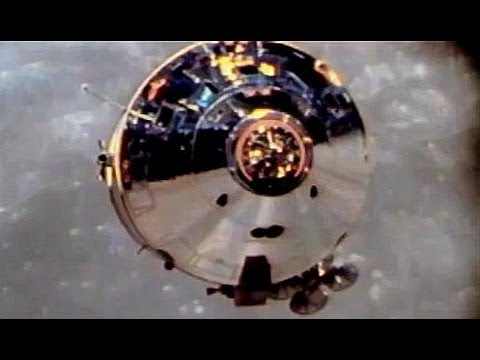more at
Reupload of a previously uploaded film with improved sound and video, and all in one piece instead of parts.
“Astronauts: Thomas P. Stafford, John W. Young, and Eugene A. Cernan
Launch date: May 18, 1969
Records the accomplishment of the basic mission of Apollo 10 – to uncover and solve the few remaining problems before lunar landing. The Lunar Module descends to within 50,000 feet of the Moon. Includes photography of the Moon from high and low orbits.”
NASA film JSC-519
Public domain film from NASA, slightly cropped to remove uneven edges, with the aspect ratio corrected, and 1-pass exposure & color correction applied (cannot be ideal in all scenes).
The soundtrack was also processed with volume normalization, noise reduction, clipping reduction, and/or equalization (the resulting sound, though not perfect, is far less noisy than the original).
PROJECT APOLLO PLAYLIST:
Apollo 10 was the fourth manned mission in the United States Apollo space program. It was an F type mission—its purpose was to be a “dry run” for the Apollo 11 mission, testing all of the procedures and components of a Moon landing without actually landing on the Moon itself. The mission included the second crew to orbit the Moon and an all-up test of the lunar module (LM) in lunar orbit. The LM came to within 8.4 nautical miles (15.6 km) of the lunar surface during practice maneuvers.
According to the 2002 Guinness World Records, Apollo 10 set the record for the highest speed attained by a manned vehicle at 39,897 km/h (11.08 km/s or 24,791 mph) during the return from the Moon on May 26, 1969.
Due to the use of their names as call signs, the Peanuts characters Charlie Brown and Snoopy became semi-official mascots for the mission. Peanuts creator Charles Schulz also drew some special mission-related artwork for NASA…
Mission highlights
This dress rehearsal for a Moon landing brought Stafford and Cernan’s lunar module Snoopy to 8.4 nautical miles (15.6 km) from the lunar surface. The low approach orbit was to refine the lunar gravitational potential needed to calibrate the powered descent guidance system to within 1-nautical-mile (1.9 km) (LR altitude update lock) needed for a landing. Earth-based observations, unmanned spacecraft, and Apollo 8 respectively had allowed calibration to 200 nautical miles (370 km), 20 nautical miles (37 km), and 5 nautical miles (9.3 km). Except for that final stretch, the mission went exactly as a landing would have gone, both in space and on the ground, putting Apollo’s extensive tracking and control network through a dry run.
Shortly after leaving low Earth orbit, the command/service module separated from the S-IVB stage, turned around, and docked its nose to the top of the lunar module still nestled in the S-IVB. The CSM/LM stack then separated from the S-IVB for the trip to the Moon.
Apollo 10 was the first to carry a color television camera inside the spacecraft, and made the first live color TV broadcasts from space.
Upon reaching lunar orbit, Young remained alone in the command module Charlie Brown while Stafford and Cernan flew separately in the LM. The LM crew checked out their craft’s radar and ascent engine, rode out a momentary gyration in the lunar lander’s motion (due to a faulty switch setting), and surveyed the Apollo 11 landing site in the Sea of Tranquility. NASA took special precaution to ensure Stafford and Cernan would not attempt to make the first landing. According to Cernan, “A lot of people thought about the kind of people we were: ‘Don’t give those guys an opportunity to land, ’cause they might!’ So the ascent module, the part we lifted off the lunar surface with, was short-fueled. The fuel tanks weren’t full. So had we literally tried to land on the Moon, we couldn’t have gotten off.” The fueled Apollo 10 LM weighed 30,735 pounds (13,941 kg), compared to 33,278 pounds (15,095 kg) for the Apollo 11 LM which made the first landing.
Splashdown occurred in the Pacific Ocean on May 26, 1969 at 16:52:23 UTC, approximately 400 nautical miles (740 km) east of American Samoa. The astronauts were recovered by the USS Princeton, and subsequently flown to Pago Pago International Airport in Tafuna for a greeting reception, before being flown on a C-141 cargo plane to Honolulu.
Hardware disposition
The LM Snoopy’s descent stage was left in orbit, but eventually crashed onto the lunar surface because of the Moon’s non-uniform gravitational field; its location was not tracked.
After being jettisoned, Snoopy’s ascent stage flew on a trajectory past the Moon into a heliocentric orbit, making it the sole intact Lunar Module ascent stage remaining of the 10 LMs sent into space…
The Command Module Charlie Brown is currently on loan to the Science Museum in London…

